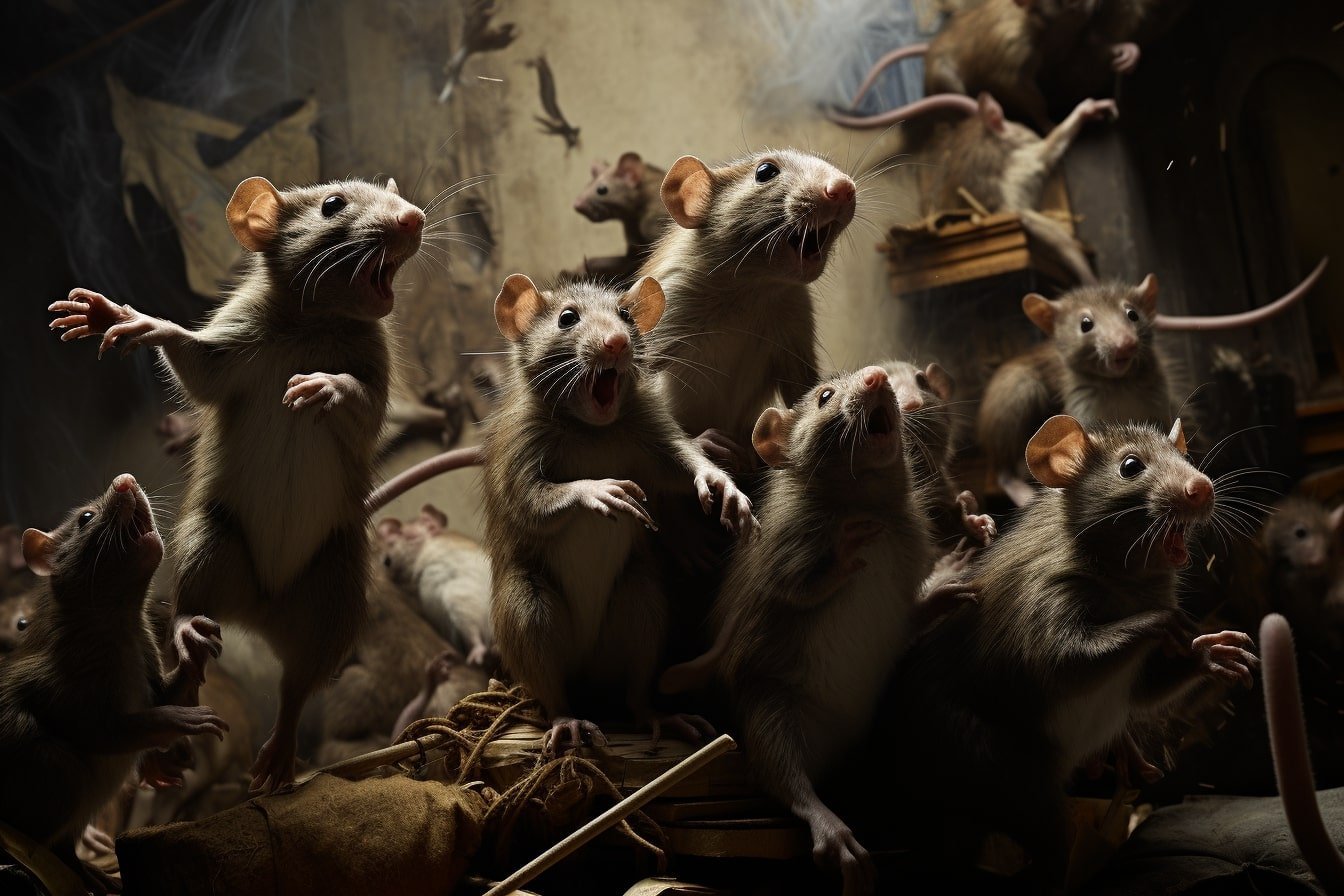Summary: In a pioneering study, scientists have successfully simulated playful environments in labs, encouraging playfulness in rats and analyzing the resulting brain activity.
Their findings, highlight the crucial role of a structure called the periaqueductal gray (PAG) in rats’ brains in play and laughter. By inhibiting this part of the brain, rats showed a marked decrease in play engagement and laughter.
The research suggests play is an instinctual behavior crucial to brain development, a premise the team plans to investigate further.
Key Facts:
- The research discovered that the periaqueductal gray (PAG) structure in rats’ brains is vital for play and laughter.
- Inhibition of the PAG led to decreased play engagement and laughter among the rats.
- The study suggests that play, often deemed an insignificant behavior, might be a critical self-training behavior for brain development.
Source: Cell Press
To study play behaviors in animals, scientists must be able to authentically simulate play-conducive environments in the laboratory.
Animals like rats are less inclined to play if they are anxious or restrained, and there is minimal data on the brain activity of rats that are free to play.
After getting rats comfortable with a human playmate, tickling them under controlled conditions, then measuring the rats’ squeaks and brain activity, a research team reports on July 27 in the journal Neuron that a structure in rat brains called the periaqueductal gray is essential for play and laughter.

“We know that vocalizations such as laughter are very important in play, which supported the idea that there is some sort of organization signal in the brain regulating this behavior,” says senior author Michael Brecht, a neuroscientist at the Humboldt-Universität zu Berlin.
“For example, children check for laughter when they play-fight with each other. If their playmate isn’t laughing anymore, they stop fighting.”
Play is one of the least understood types of behavior, and scientists currently do not know the neural pathways that control the playfulness of humans or other animals. To learn more about the neuroscience of play, these researchers first ensured that the rats they studied were free to move around throughout the experiment.
In addition, they gave the rats a few days to get accustomed to their new environment. Once the rats were comfortable, the researchers played games of “chase the hand” with them and tickled the rats on their backs and bellies.
Rats don’t laugh the way humans do, but when amused, they do squeak at a high-pitched tone that humans cannot hear. The researchers monitored this sound to ensure that the rats were having fun.
When looking at these animals’ brain activity, the researchers found strong neural responses to both tickling and playing in the lateral column of the periaqueductal gray, or PAG.
If this part of the brain was inhibited, the rats stopped engaging in play as much and did not laugh as frequently. On the other hand, if the rats were put in an unfamiliar environment that was designed to provoke anxiety, they also stopped laughing, and the tickling- and play-responsive cells in the lateral column of the PAG decreased their activity.
The PAG is located in the midbrain, and it has been known in the past to control vocalizations and the fight-or-flight response. Play-fighting can also invoke a fight-or-flight response, which might be one explanation for the PAG’s role in play. Prior research has shown that playfulness persists even if the cortex, which controls consciousness, fails to develop, which suggests that play is a more instinctual behavior.
“A lot of people think that play is childish or not a very decisive behavior, but play is underrated,” says Brecht.
“In my perception of play, it’s a self-training behavior. Usually, brains serve for controlling behaviors. Play behaviors, however, seem to serve for growing brains.”
Next, the researchers plan on seeing if they observe similar activity in the lateral column of other animals when they are being played with, which could allow them to compare the playfulness of different species. They also plan to see if giving younger rats different play habits might change the way that the lateral column of the PAG develops.
About this behavioral neuroscience research news
Author: Press Team
Source: Cell Press
Contact: Press Team – Cell Press
Image: The image is credited to Neuroscience News
Original Research: Open access.
“Play and tickling responses map to the lateral columns of the rat periaqueductal gray” by Michael Brecht et al. Neuron
Abstract
Play and tickling responses map to the lateral columns of the rat periaqueductal gray
Highlights
- Blocking the PAG interferes with ticklishness and play in rats
- Unit recordings in the PAG indicate a columnar representation of tickling and play
- Specifically, the lateral column of the PAG is activated during play and tickling
- Optogenetic inactivation of the lateral PAG impaired playful behaviors
Summary
The persistence of play after decortication points to a subcortical mechanism of play control. We found that global blockade of the rat periaqueductal gray with either muscimol or lidocaine interfered with ticklishness and play.
We recorded vocalizations and neural activity from the periaqueductal gray of young, playful rats during interspecific touch, play, and tickling. Rats vocalized weakly to touch and more strongly to play and tickling. Periaqueductal gray units showed diverse but strong modulation to tickling and play.
Hierarchical clustering based on neuronal responses to play and tickling revealed functional clusters mapping to different periaqueductal gray columns. Specifically, we observed play-neutral/tickling-inhibited and tickling/play-neutral units in dorsolateral and dorsomedial periaqueductal gray columns.
In contrast, strongly play/tickling-excited units mapped to the lateral columns and were suppressed by anxiogenic conditions. Optogenetic inactivation of lateral periaqueductal columns disrupted ticklishness and play.
We conclude that the lateral periaqueductal gray columns are decisive for play and laughter.






